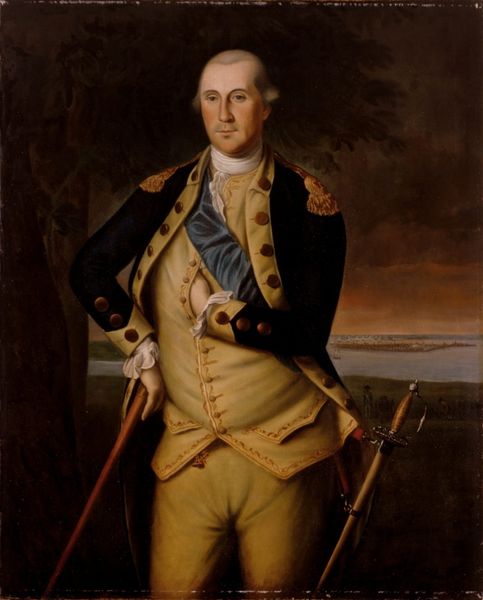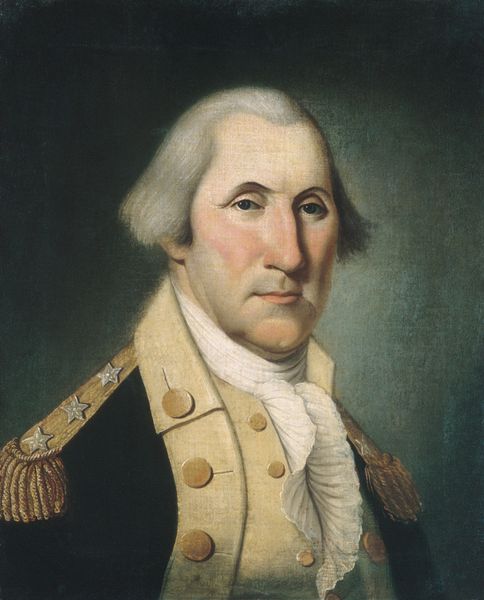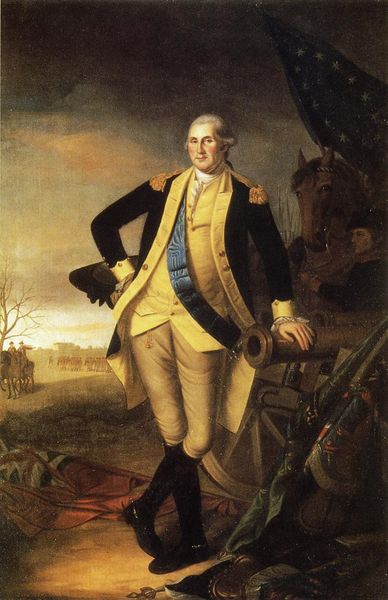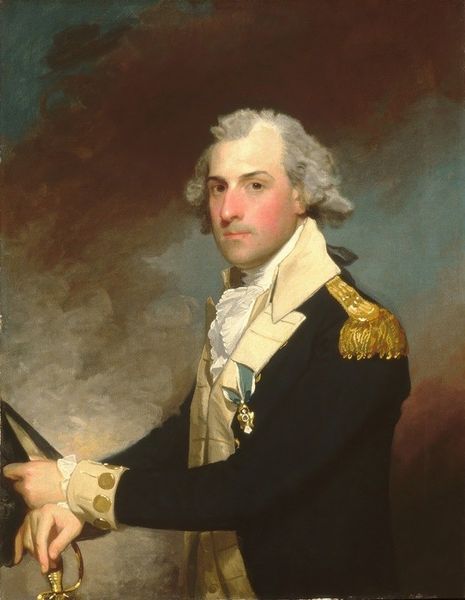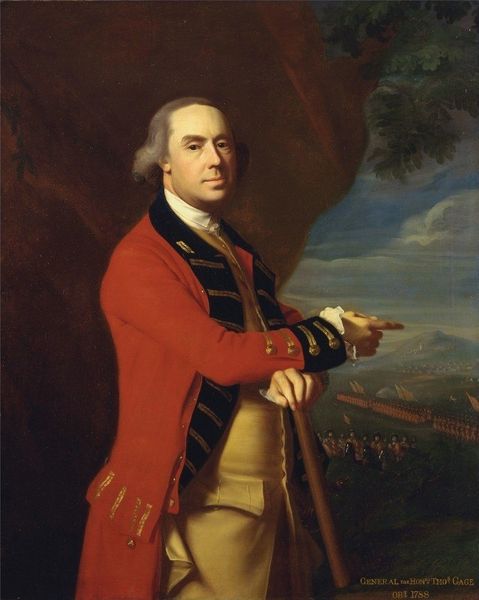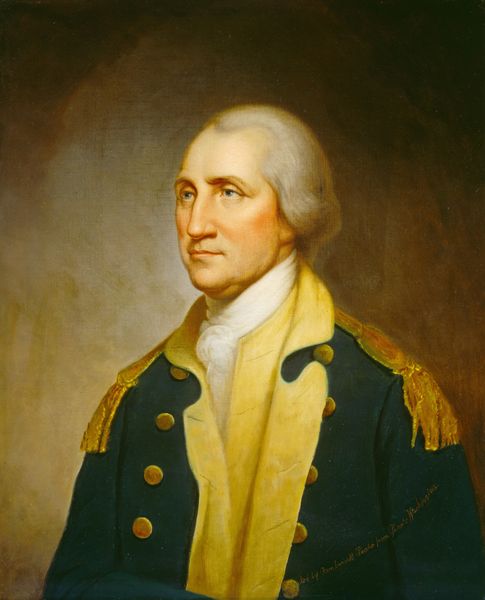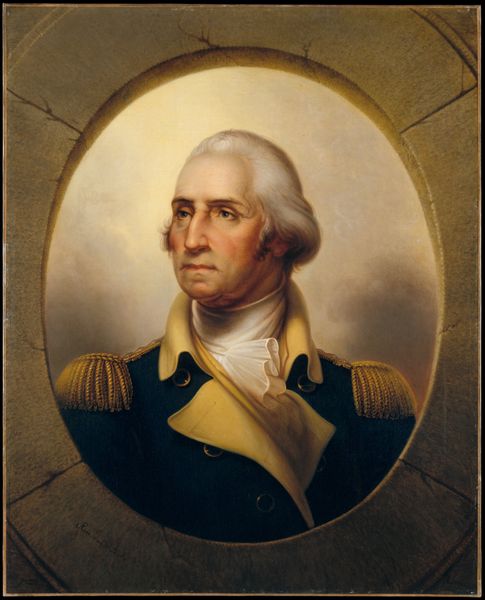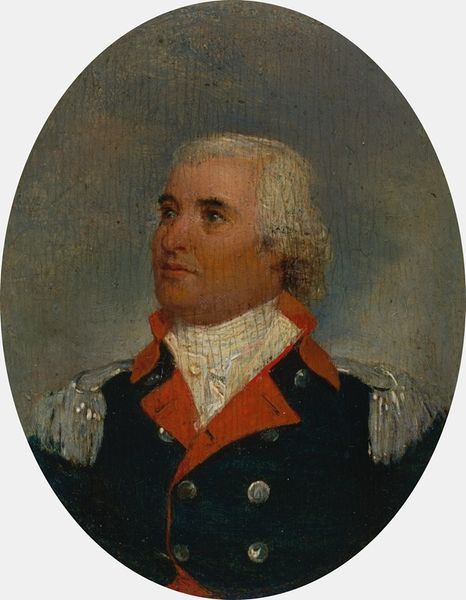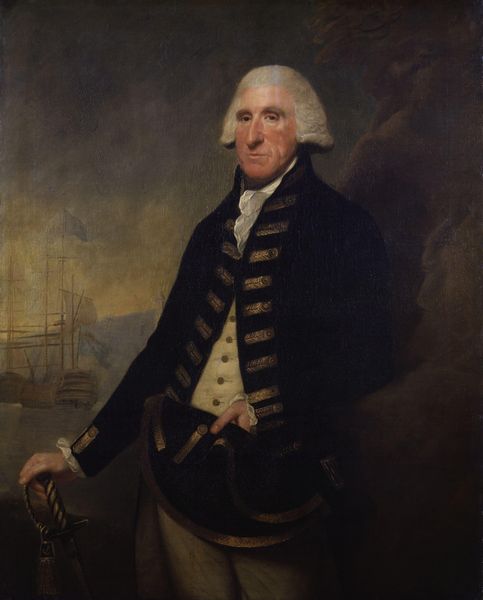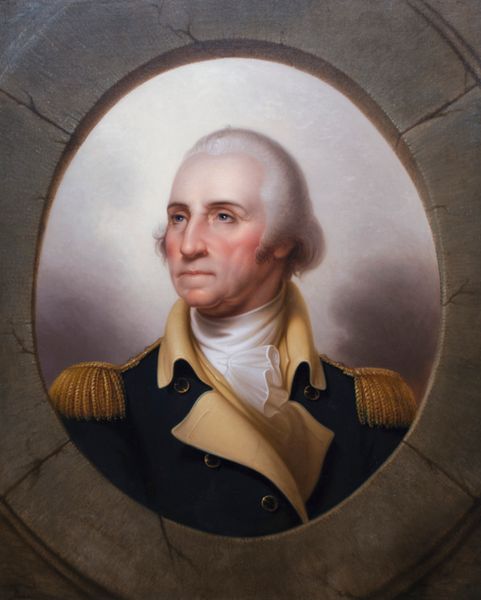
painting, oil-paint
#
portrait
#
neoclacissism
#
painting
#
oil-paint
#
history-painting
#
academic-art
Dimensions: overall: 91.3 x 70.3 cm (35 15/16 x 27 11/16 in.) framed: 125.1 x 104.8 x 10.8 cm (49 1/4 x 41 1/4 x 4 1/4 in.)
Copyright: National Gallery of Art: CC0 1.0
Editor: So, here we have Charles Peale Polk’s "General Washington at Princeton," painted around 1790, using oil paint. I find it to be a very stately portrait, a classic depiction of power. What do you see in this piece? Curator: It’s certainly that. But let's delve deeper. What's compelling here is not just Washington's stoicism but how this image participates in constructing and solidifying his, and by extension, the nation’s identity. What narratives do you think Polk is reinforcing through this image? Editor: I guess, stories of strength and leadership. You know, Washington as the father of his country? Curator: Precisely. The stormy background is interesting, right? But contrast it with the bright building – Nassau Hall – in the distance. This contrast reinforces Washington's ability to navigate chaos towards a stable future. Think about the racial dynamics at play in this period; enslaved labor provided the very economic foundation upon which Washington's leadership, and this new nation, was built. Doesn't this context problematize the idealized narrative presented here? Editor: That's a really important point. I hadn’t considered the visual choices in relation to the broader social landscape of the time. Curator: Exactly! This artwork exists in a nexus of power, privilege, and representation. To understand its true complexity, we have to see beyond the surface and consider these different voices. Editor: Thanks! It's helped me to see the image in a whole new light – as a product and reinforcer of specific historical and political dynamics. Curator: Agreed, recognizing those influences helps us grapple with the challenging intersections between art, history, and societal power structures.
Comments
No comments
Be the first to comment and join the conversation on the ultimate creative platform.
